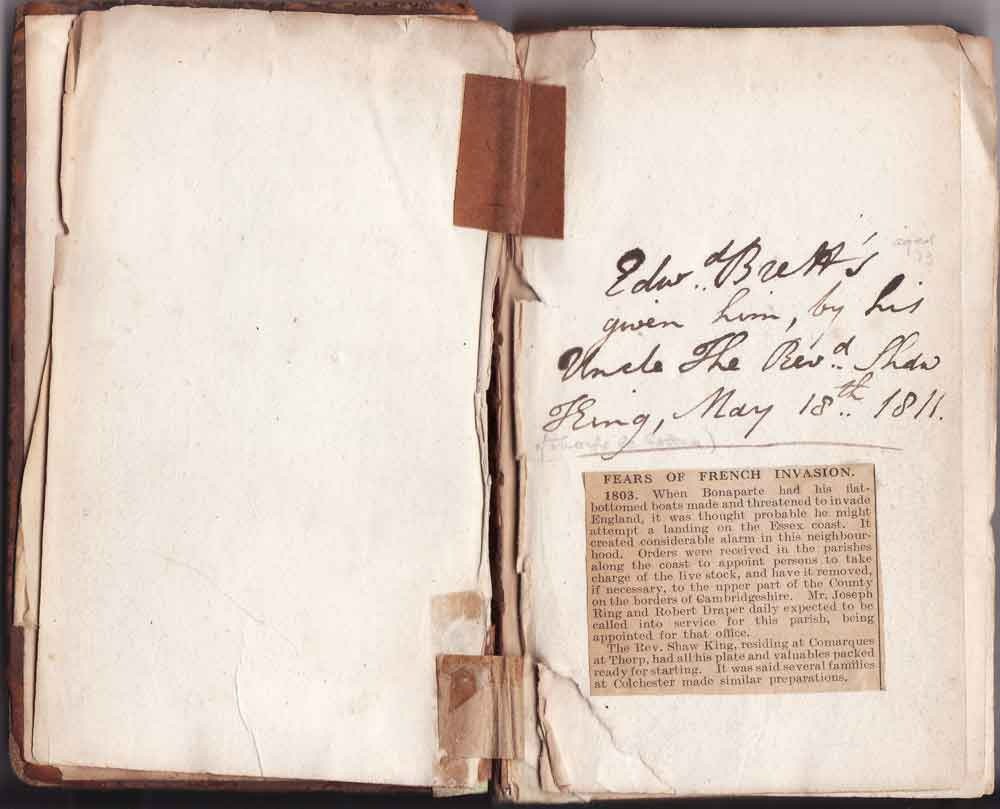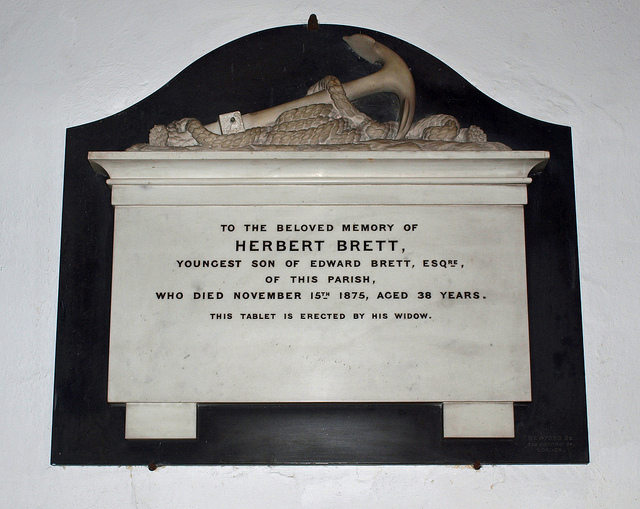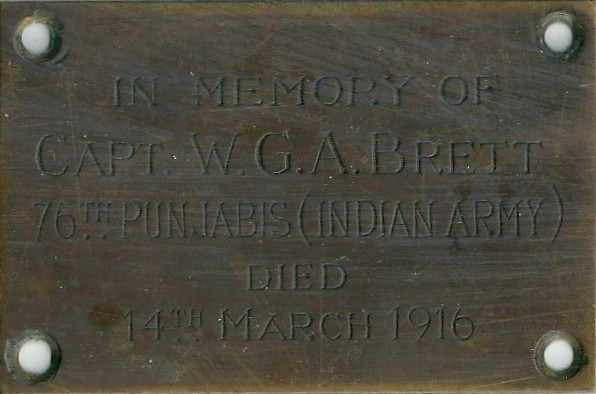
Frontispiece of The
Pleasures of Hope (Thomas Campbell, 1806) given to Edward
Brett by his uncle Rev. Shaw King
image from Mike Poyzer

Inscription in The
Pleasures of Hope (Thomas Campbell, 1806) given to Edward
Brett by his uncle Rev. Shaw King
image from Mike Poyzer

